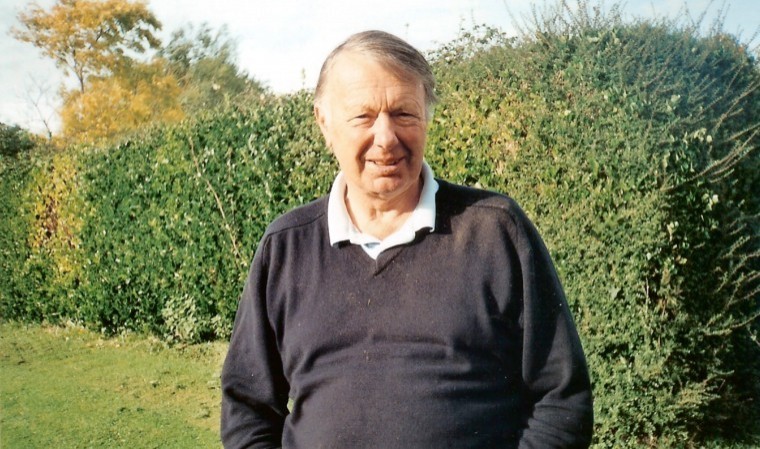2018 has been a year with a number of upsides, although perhaps not quite enough to counterbalance the downsides.
A difficult spring brought its share of planting and cultivating difficulties, with many stockmen unable to get animals out on meadows without risking severe poaching. Then, when eventually conditions improved, everyone was hoping for Nature to play its part, the ‘taps were turned off’ and we had not a drop of rain for two months, just at the time growing crops need regular moisture to develop. Like many in the south we did manage to get one good cut of grass into the clamp, and a few more wrapped silage bales, before growth stopped. A fortunate upside.
Unfortunately however many fields of maize, already becoming desperately short of moisture by mid/late June, stopped growing, missing their normal development stages until the drought eased at the end of July, by when further growth was out of the question. So while many crops greened up, the cobs never really developed on the worst affected acres.
Despite which we just about harvested enough to fill the clamp, although perhaps not with the usual volume of cobs which, being so low on the stalks were simply not harvestable. Now we hope, with that good first cut of grass to have enough to last through turnout next year. So, somewhat tentatively, I’m hoping a marginal upside.
The malting barley, on greensand, was both ‘upside and downside’ in as much as the yield, with the crop dying on its feet, was pitiful, at less than one and a third tons an acre, cut before the drought broke, but at least there were no drying costs, the price achieved was some £70 a ton more than the last time we grew barley three years ago. So I suppose it could have been worse.
I wrote last month of our brief trip to Argyll. These trees please me more each visit, in that they look so well, and grow so well, with less and less attention. Indeed my long term stockman, Wally Elvin, has heard me talking of them for so long now that he took his first ever trip north of the border and visited the forest in the summer, I think he still prefers his cattle. The land had a history of being a dairy farm since the 1800s so the fertility was doubtless long established. It certainly shows in the trees phenomenal growth. A definite upside here too.
Several friends wonder why I chose this long range investment. However I have no regrets and, were I to find the secret of something approaching eternal life, I would not hesitate to invest further in forestry. And quite possibly move to live up there. I would really recommend it, both as an investment, quality of life and lack of cars. Additionally, unlike cattle, trees don’t need feeding and don’t get out nights.
And then of course there’s TB. How can I let this ramble through a dying year pass without a few more comments (to add to what I accept have been many) regarding the past year? The herd has been closed down since March, we have had four tests in that time, claiming four ‘reactors’. None of which have, at the time of writing had any positive test results so we have no idea if we have TB, or if so, where it is coming from. Meanwhile, our herd remains closed down, robbed of good cows on the strength of a testing regime considered, not unreasonably, by many involved in the industry, as not fit for purpose.
These cows are the lifeblood of any herd, animals that cannot be replaced in the same way as store cattle. How can a dairy farmer safely replace these losses from outside purchases? It’s a situation which need never have happened.
After the thorough and effective TB eradication exercise, carried out after the Second World War, with total support of the (then) dedicated Ministry of Agriculture. From a country pretty much endemic with bovine TB it was, within some 15 years almost eradicated, until limp politicians, worried at the prospect of a small minority, stopped the project in the 1970s. And look where we are again now?
We are only one of a number of herds in the area affected with either ‘breakdowns’ or by radial testing. All suffering similarly due to a situation exacerbated by absurd cattle movement laws? Laws which in turn are being exploited by a few big beef ‘finishers’ This group mainly have what, in dairying terms, are flying herds. Groups of animals, in all probability, containing infectious, bought in, beef cattle. All this a huge downside.
I spoke of the calf position last month. It is a depressing, although partially understandable, fact some farmers get around the potential overstocking aspect by simply shooting their new born bull and crossbred female calves at birth, because they have neither the room, food, nor staff to rear the creatures. There are also many who were brought up as stockmen, and to whom such behaviour is completely alien. Who consider a barn, yard, or meadow full of young home bred cattle with huge pride; as a reflection on traditional standards; of good ‘stockmanship’; respect for the environment, and a way of life either chosen, or born into. And the thought of this latter is certainly an upside to die for.
Wishing you all a Peaceful, Happy Christmas and healthy 2019.




